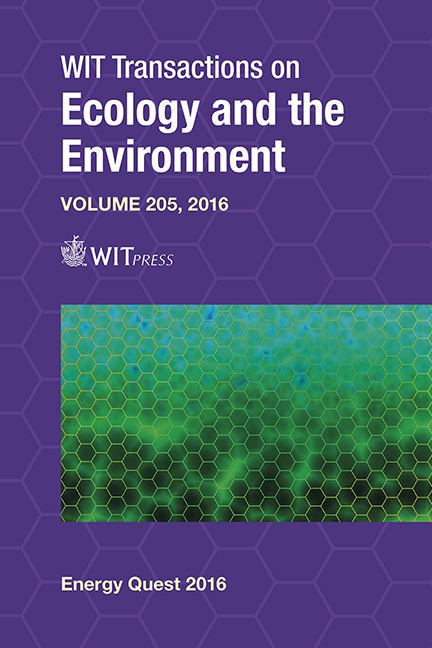Portuguese Passive House Case Study: A Comparison Between Monthly And Seasonal Energy Performance Methods
Price
Free (open access)
Transaction
Volume
205
Pages
12
Page Range
167 - 178
Published
2016
Size
424 kb
Paper DOI
10.2495/EQ160161
Copyright
WIT Press
Author(s)
N. Simões, D. Teles, C. Serra
Abstract
Buildings are responsible for 40% of final energy consumption in the European Union. Thus, it is crucial to calculate their energy performance during both the design and use phases. During the design phase, estimating energy performance allows the definition of appropriate solutions to incorporate in the building envelope, while during the use phase it is relevant for the identification of adequate improvement measures. The Energy Performance of Buildings Directive recommends that member states shall use a common methodology for calculating the energy performance based on European or international standards. One of the most relevant standards is the ISO 13790 which provides two general types of methods, one of which is the quasi-steady-state method, where energy balance is typically calculated over one month or a whole season and dynamic effects are taken into account by using an empirical gain and/or loss utilization factor.
This paper presents a brief comparison between two quasi-steady-state methods that are being applied in Portugal: a seasonal approach which is mandatory under the current legislation and a voluntary monthly approach proposed by the Passivhaus Institute.
This comparison was performed using an existing residential house certified by the Passivhaus Institute as the case study. Furthermore, to better evaluate the thermal and energy level of this particular case study, a sensitivity analysis was performed using different climate data for Portugal (Lisbon, Oporto and Ílhavo) and other regions in Europe. The impact of climate variation in Europe was evaluated in terms of Passivhaus criteria verification using the monthly approach. It was demonstrated that cities with a similar climate to that of the Portuguese case, such as Rome, need little to no changes in order to achieve the Passivhaus standard. However, in other cities like Berlin, Dublin or Helsinki the building will need some improvements in order to achieve the full requirements.
Keywords
energy performance of buildings, monthly and seasonal method, passive house





